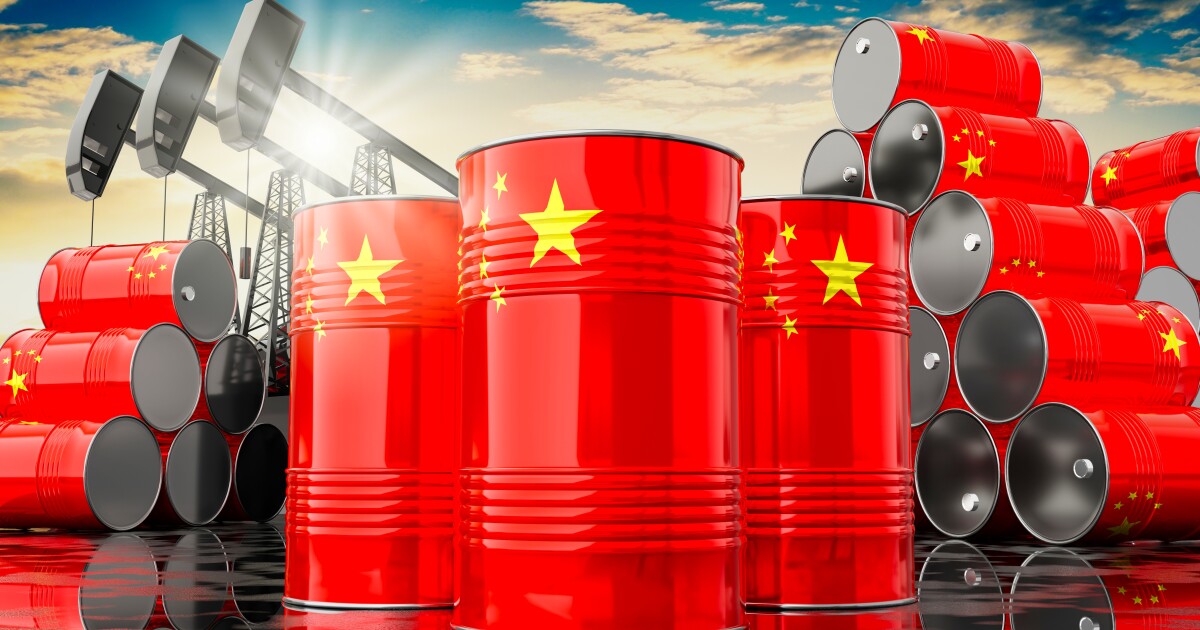China has started building new strategic reserves for crude oil, providing a boost to global oil demand and potential support for prices, as new supplies from both within and outside Opec-plus are hitting the market.
Industry sources told Energy Intelligence that details of total new capacity and locations are unclear so far, but most are expected to be underground caverns, as was the case for a planned third phase of strategic reserve sites in the late 2010s that was never built.
In 2026, in Zhoushan, south of Shanghai, an underground cavern operated by China National Offshore Oil Corp. (CNOOC) and capable of holding 20 million barrels of crude oil will be completed, a Chinese expert told Energy Intelligence, adding that this would be a dedicated strategic reserve site.
Another well-placed source said that a total 200 million bbl of strategic petroleum reserve capacity would come on line in 2026, while traders cited unconfirmed reports of much higher capacities.
Beijing’s decision to launch, and apparently to finance, new reserves sites speaks to China’s growing obsession with energy security at a time of growing geopolitical tensions.
“For China, energy security is a serious issue, with its oil dependency at more than 70% and growing over the past 10 years,” a senior Chinese oil analyst said last week. For the first eight months of 2025, China’s crude oil imports of 11.36 million barrels per day equated to 77% of the 14.73 million b/d refinery runs figure.
Storage, for Real
China’s new strategic reserve sites are dedicated places where oil is stored for the purpose of use in emergencies, much like the US is storing 405 million bbl in salt caverns along the US Gulf Coast.
Beijing will finance the new sites, the expert said.
China’s first Energy Law, enacted on Jan. 1, 2025, includes a chapter on energy reserves and emergency response. Its Article 47 states that “the state shall establish and improve an efficient and coordinated energy reserve system in accordance with the principles of government leadership […] and give full play to the strategic guarantee, macro-control, and emergency response functions of energy reserves.”
CNOOC and fellow Chinese state major China National Petroleum Corp. created dedicated oil reserve subsidiaries in February, according to the International Energy Agency, of which China is an associate member.
From SPR to CPR
These new sites would complement China’s current strategic oil reserve capacity of 313 million bbl. The first phase, completed and filled by 2008, can hold 103 million bbl, while the second phase, completed in 2019, has an official capacity of 210 million bbl. Energy Intelligence estimates that the reserves are somewhat over 90% full, containing some 286 million bbl of crude.
A third phase, which was to add at least 171 million bbl of crude, was discussed in the 2010s, but interest faded, and Chinese state companies, which built and operated the 13-sites part of Phase 1 and 2, dragged their feet over operating more sites for no revenue.
Instead, Chinese state companies have built commercial petroleum reserves, which amount to commercial stocks that are at Beijing’s disposal, if needed.
“Now, it is about having dedicated sites for strategic reserves,” the Chinese expert said. “Commercial stocks are different — the oil can go in and out. With SPRs [strategic petroleum reserves], the oil remains in storage until it is needed.”
Three underground storage sites had been discussed before 2020, in Yunnan, Sichuan and Chongqing, and could hold crude entering China by pipeline from the Myanmar port of Kyaukphyu, the expert said. The Yunnan site may already be completed, while the two others may be under construction.
Beijing’s renewed emphasis on additional strategic reserves is likely to accentuate concerns over a possible Chinese invasion of Taiwan.
Increases in oil and food stocks in the summer of 2024 prompted some experts to ponder if Beijing was stocking up to prepare for a US-led sea blockade if it attacked Taiwan.
China’s renewed interest in building up its strategic storage has traders and analysts speculating that the country’s inventory builds might provide a home for additional crude volumes entering the market through the remainder of 2025 and into 2026.
One source noted that China has already started buying crude oil for the strategic reserve to be stored in commercial tanks farms, adding a total 40 million bbl through October.
Traders said the crude buying has helped support current oil prices, keeping the market tighter than otherwise would be the case.
Filling SPR storage would continue the tremendous commercial stockbuilding activity of the past 10 years, which has lapped up 1.07 billion bbl for an average 275,000 b/d, Energy Intelligence data shows.
Since the start of the Covid-19 pandemic in early 2020, China picked up the pace of buying, having since added 380,000 b/d for a total 770 million bbl.
China’s additional crude oil demand for building inventories has been crucially important for global oil balances for many years — allowing producers to sell more oil than just needed for refinery use.
